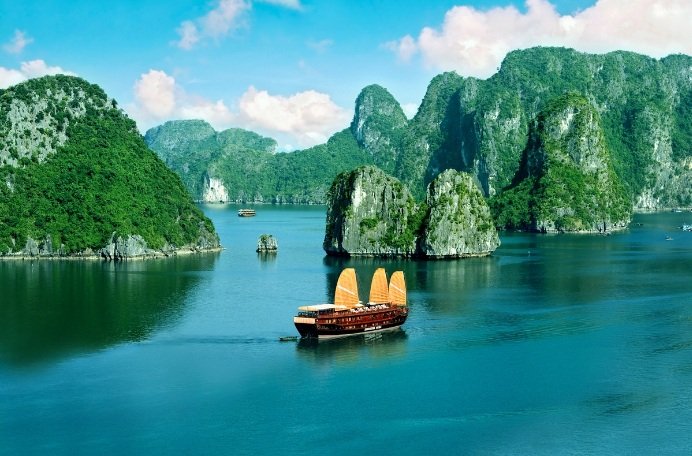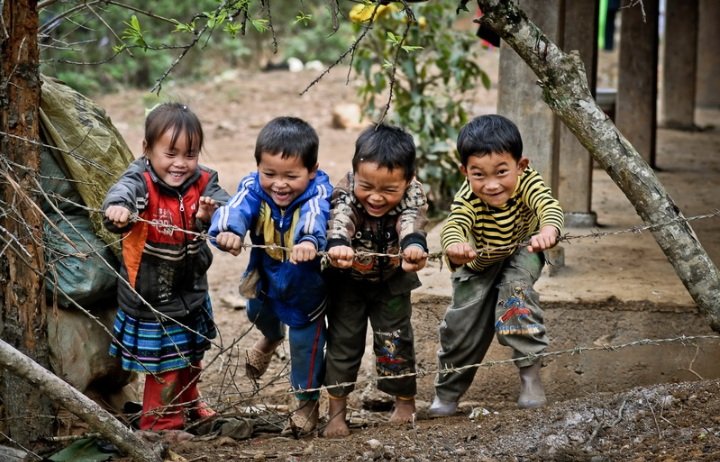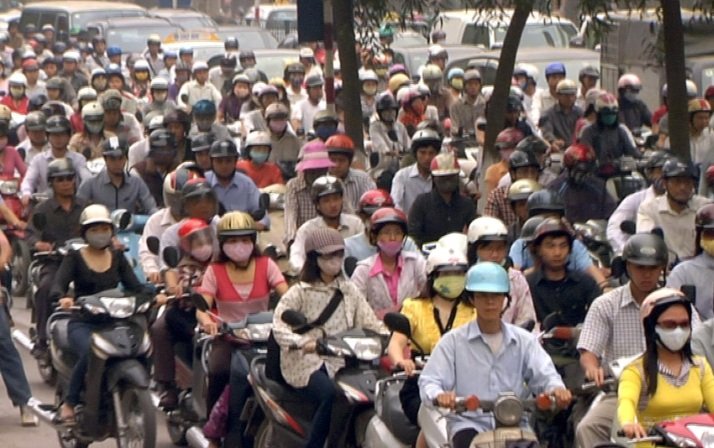Small Glossary about Vietnam
Vietnam is not an ordinary destination and has a lot of surprises in store for those who decide to travel there.
But if you are ready to get out of preconceived ideas about life in general and open yourself to a new culture and discover a new change of scenery, Vietnam is the ideal place.
In this article, here is the general and essential information for any traveler.
TERRITORY
As a country of the Indochinese peninsula, Vietnam is open to the Indian and Buddhist influence on the one hand, but also to that of the Confucian and Chinese world.
Its surface area is 331,698 km² and its maritime facade extends over 3,200 km, leading to the Gulf of Tonkin in the North and the South China Sea in the South.
The plains occupy only 20% of the territory and three-quarters of the country is made up of mountains. Vietnam shares its borders with three countries:
China in the North (1,150km of common borders)
Laos in the North – East (1650 km)
Cambodia in the South-West (930 km)

The Vietnamese territory is divided into three geographical areas: the North (Tonkin – Bac Bo), the Center (Annam – Trung Bo) and the South (Cochinchine – Nam Bo). Currently it is divided into 64 administrative provinces.
The main cities are Hanoi, the political capital (7.2 million inhabitants in 2014), and Ho Chi Minh City (12.87 million inhabitants in 2014). Other important cities are Haiphong, Danang, Hue and Can Tho.
The Vietnamese territory is crossed by two rivers with densely populated deltas:
In the North, the Red River extends for 510 km and its main tributaries are the Lo River (Clear River) and the Da River (Black River).
In the South, the Mekong River, crosses Vietnam on 220 km, it forms a huge delta, suitable for rice cultivation.
CLIMATE
With the extension of its latitude, between 8°30 and 23°22, Vietnam offers very variable and different climatic conditions from one region to another. The vicinity of Danang in the center of the country is considered as the climatic border.
The North has two distinct seasons, marked by a thermal amplitude uncommon in the region: the winter (from November to April), includes temperatures ranging from 20 ° C to 10 ° C, and the summer temperatures can exceed 35 ° C. It is not uncommon for typhoons to affect the Red River Delta during this season.
In the South, the tropical climate is divided into two seasons: the rainy season brought by the south-west monsoons (from May to November) and the dry season (from December to April) with a constant temperature of around 27°C all year round.
You will find all the detailed information about the climate in Vietnam by following this link.

POPULATION
In general
Vietnam has a population of approximately 95.54 million (February 2017). The natural increase is 1% in 2017, with a strong geographical disparity between regions. The government hopes to reduce it through the implementation of a family planning policy. The fertility rate is 2.05 children per woman. Life expectancy at birth is relatively high, ranging from 70 to 85 years.
Density
The average density is 255 inhabitants/km2. The regions of the Mekong Delta and the Red River concentrate 50.8% of the population.
The population density is very high, with more than 1000 inhabitants/km2 in the Red River Delta and more than 450 inhabitants/km2 in the Mekong Delta.
ETHNIC DISTRIBUTION
The country is characterized by its ethnic diversity (54 ethnic groups). We can say that the Vietnamese population is mainly composed of the Viêt, officially called Kinh (86%) and 53 ethnic minorities. The latter are mainly found in the mountainous regions or the highlands: in the mountains of the North (30 to 40% of the population) or in the provinces of Cao Bang, Ha Giang, Lang Son, Lai Chau and Son La. Among these ethnic groups, four have more than one million representatives (Tay, Thai, Muong and Khmer), thirteen have between 100,000 and 900,000 representatives and 36 have less than 100,000. Some have only a few hundred representatives, like the Brâun, about 300.

RELIGIOUS DISTRIBUTION
Vietnamese people practice a variety of religions: ancestor worship, Taoism, Confucianism, Hinduism, Islam, Christianity. However, Buddhism is dominant (9.3%), followed by Christianity (6.7%), Hoa Hao (1.5%), Caodaism (1.1%), Protestantism (0.5%), Islam (0.1%) and None (80.8%).
LANGUAGE
The official language is Vietnamese, or Kinh. Although borrowing from Khmer, Thai and Chinese languages, it is written using Latin characters, considered the heritage of 18th century European missionaries. French, spoken by about 100,000 people, is experiencing a certain revival today. However, English tends to be the language of business, and is widely taught in schools and training centers.
TRANSPORT
One of the striking and impressive features for foreign tourists coming to Vietnam is that Vietnamese people use scooters as their main means of transportation, much more than cars. Not only in the big cities but also in the countryside which is full of them. Motorcycles allow people to move around more easily but also to transport all kinds of goods such as animals, food, objects… which makes the traffic in the city very dense especially during rush hour.
The local inhabitants have adopted a driving style that is not very safe and can be dangerous for pedestrians or drivers themselves. To get around on a large scale, there are trains that crisscross the country or buses as well as air links. In some regions such as the Mekong Delta, the preferred means of transportation is by boat.

AIRPORT
International airports
Vietnam has 9 international airports but only 5 of them are currently served by international flights: Tan Son Nhat (in Ho Chi Minh City), Noi Bai (in Hanoi), Cam Ranh (in Nha Trang), Danang (in Danang) and Phu Quoc.
The remaining four which receive domestic flights are: Can Tho (in Can Tho), Lien Khuong (in Da Lat), Phu Bai (in Hue), and Cat Bi (in Hai Phong).
National Airports
The number of national airports in Vietnam is 12. These are: Ca Mau (in Ca Mau), Rach Gia (in Kien Giang), ), Phu Cat (in Binh Dinh), Tuy Hoa (in Phu Yen), Buon Ma Thuot (in Daklak), Pleiku (in Gia Lai), Con Dao (in Ba Ria- Vung Tau), Dong Hoi (in Quang Binh), Chu Lai (in Quang Nam), Vinh (in Nghe An), Tho Xuan (in Thanh Hoa), and Dien Bien Phu (in Dien Bien).
TOURISM
In Vietnam, there has been a clear increase in tourism over the years. In 2018, this beautiful country welcomed more than 15.5 million tourists compared to 8,000,000 in 2014!
In order to attract more visitors, the tourism development department has implemented new policies with the development of reception facilities and a relaxation of the visa policy.
From January 1, 2015, tourists from ASEAN member countries, and nationals from 7 countries (Russia, Japan, Korea, Denmark, Norway, Sweden and Finland) will be able to have a visa exemption for 30 days. Until June 30, 2020, French citizens are exempted from visas for stays of less than 15 days.
Main cities visited
- Hanoi (Hà Nội), the capital of the country, called the city of peace.
- Ho Chi Minh City (Saigon), formerly known as Saigon, the bustling city of the south.
- Hue, the imperial city, the Forbidden City in China, listed as World Heritage by UNESCO.
- The city of Hoi An, a Unesco World Heritage Site.
- Danang with the Cham Temples, vestiges of the Champa Kingdom.
- Dalat, the European city.
- Nha Trang, famous for its beaches and its bay.
Natural sites
There are two remarkable natural sites listed as Unesco World Heritage Sites:
- Halong Bay
- Phong Nha- Ke Bang National Park
Other remaining areas also have beautiful landscapes to discover: Mekong Delta, Nha Trang beaches, Phu Quoc Island, sand dunes in Mui Ne, Danang’s seabed and coral reefs or terraced rice fields in the northern mountains,…
